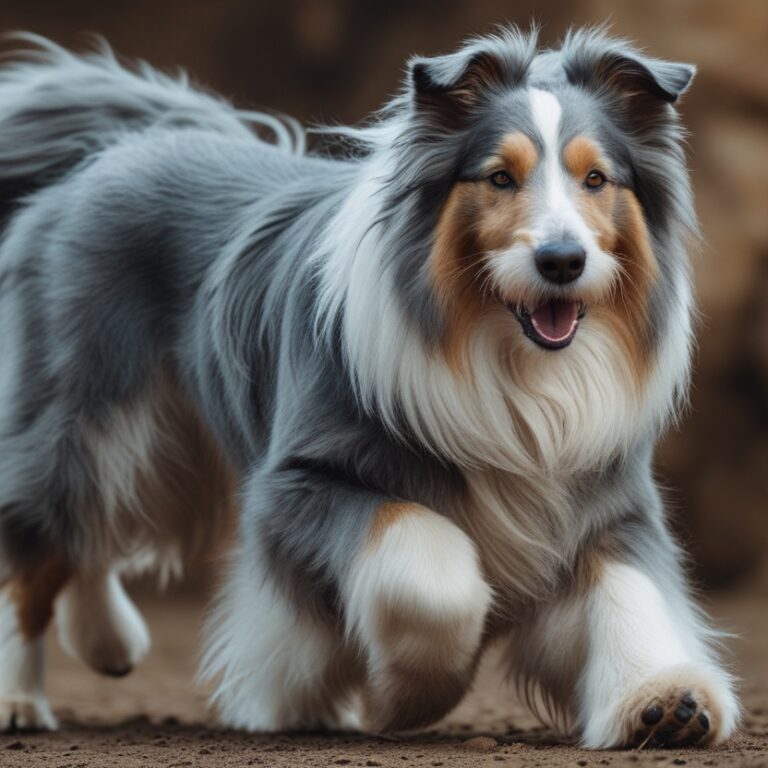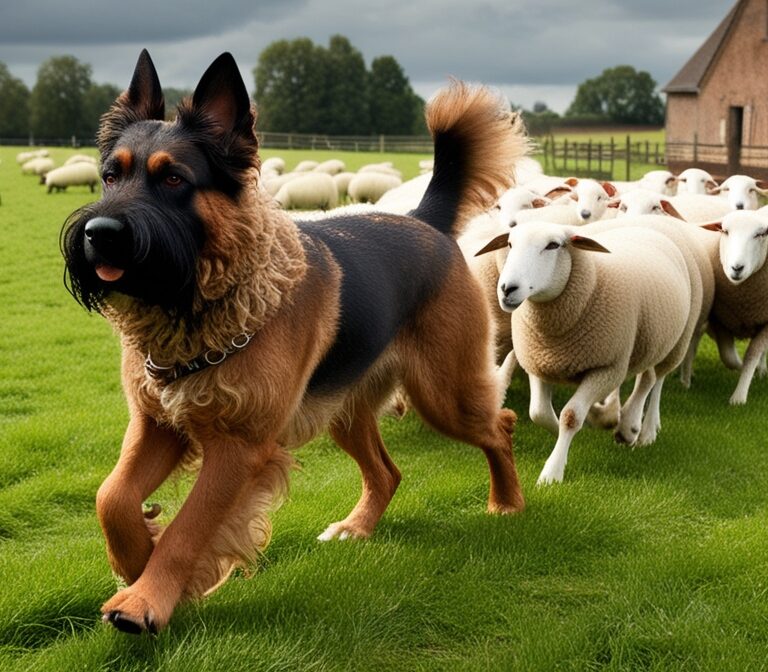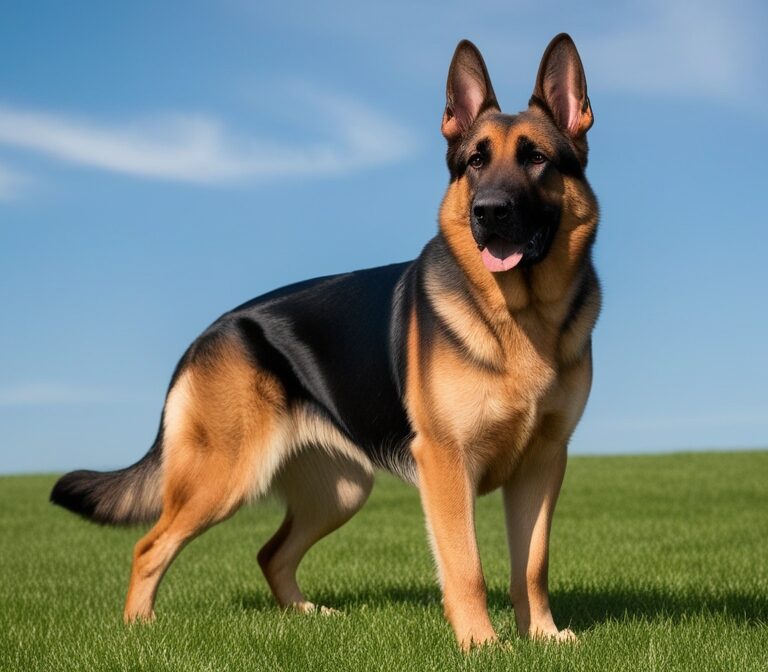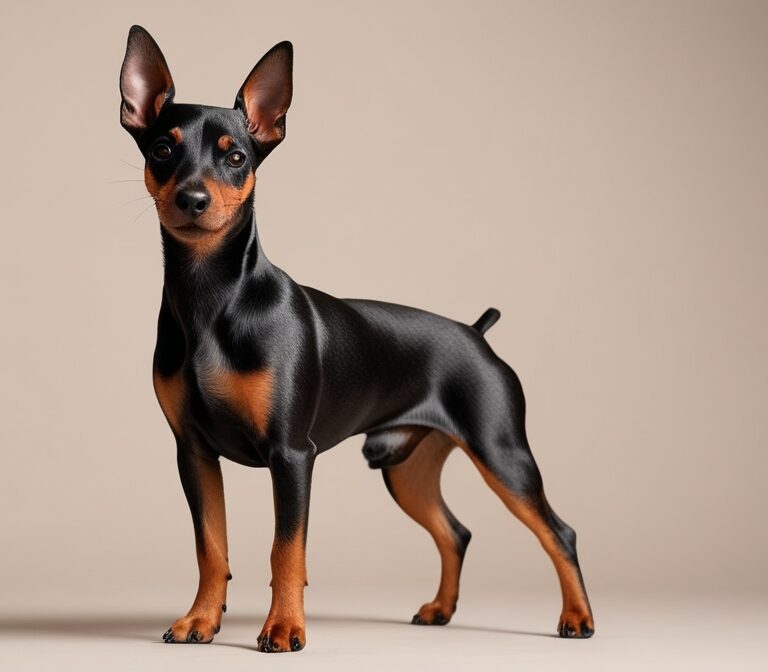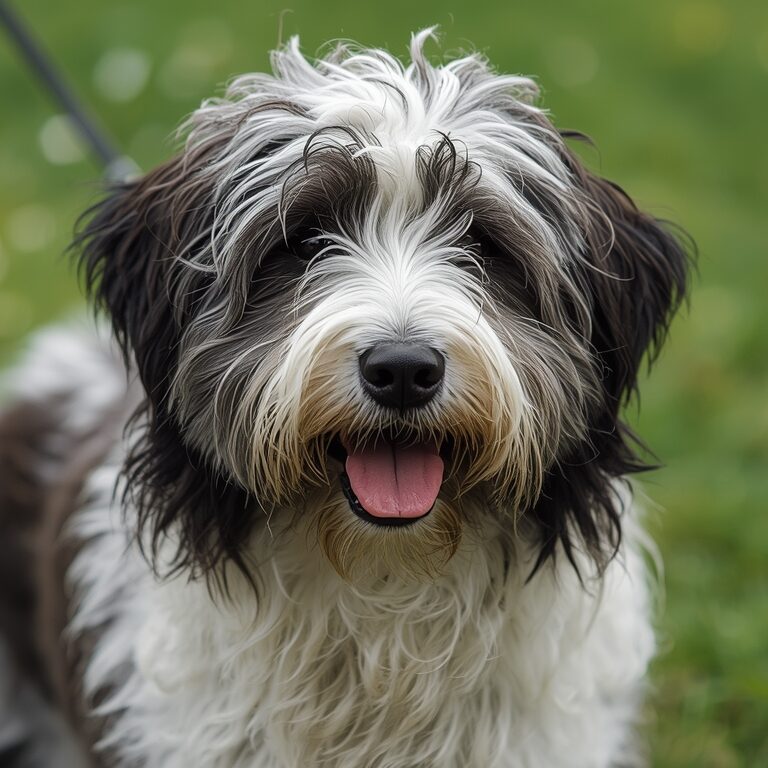Pyrenean Sheepdog: Complete Guide to the Energetic Herding Breed
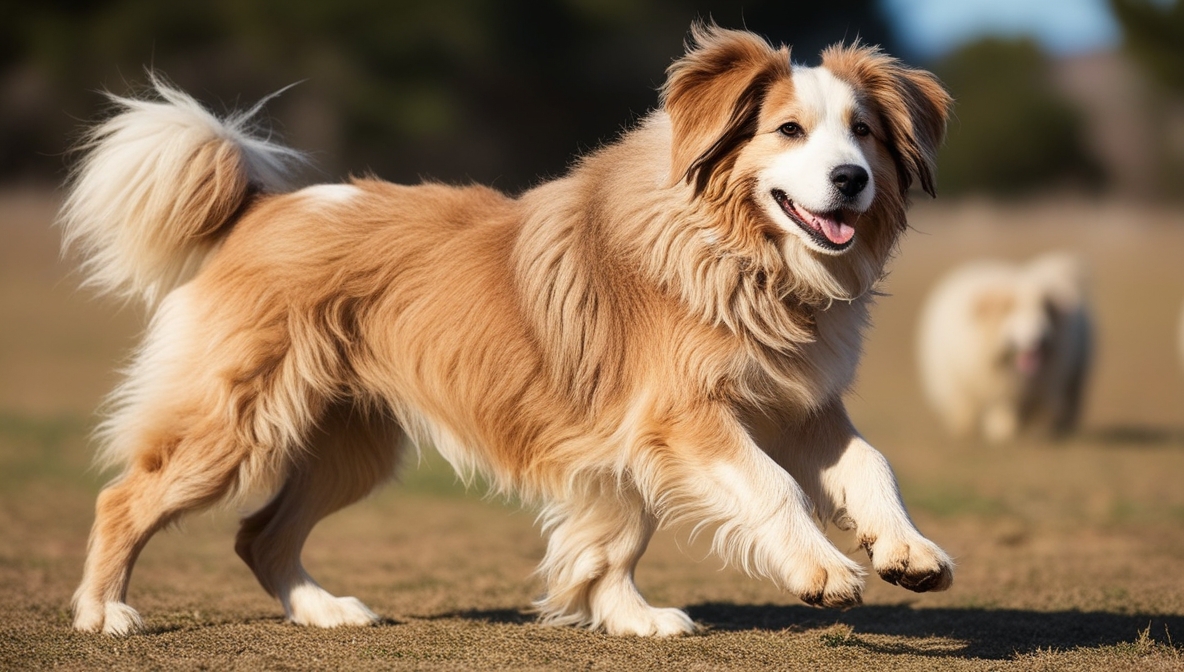
Introduction to the Pyrenean Sheepdog
The Pyrenean Sheepdog, also called the Pyrenean Shepherd, is a small yet highly energetic herding dog originating from the Pyrenees Mountains of France. Known for its boundless energy, intelligence, and dedication, this breed has been trusted for centuries as a reliable pastoral dog for guiding and protecting livestock. Unlike larger guardian breeds such as the Great Pyrenees, the Pyrenean Sheepdog’s primary role was to herd sheep and cattle with remarkable speed and precision.
This breed belongs to the working group of dogs and is recognized by major organizations such as the American Kennel Club (AKC) and the Fédération Cynologique Internationale (FCI). Its compact size, watchful temperament, and adaptability make it both a competent worker in the fields and a lively companion in modern homes.
Enthusiasts appreciate the mischievous personality of the Pyrenean Sheepdog, which is balanced by its strong loyalty and desire to please its owner. Because of its whip-smart intelligence, the breed thrives on mental stimulation and active training routines.
In today’s world, the Pyrenean Sheepdog is not just confined to farms. It actively participates in agility sports, obedience competitions, and even excels as a search and rescue dog thanks to its sharp instincts and tireless work ethic. Owners often describe it as a “big dog in a small body,” combining the endurance of larger herding dogs with the playfulness of a companion pet.
This guide explores the history, appearance, temperament, care requirements, training methods, and health considerations of the Pyrenean Sheepdog, ensuring that prospective owners and dog enthusiasts gain a complete understanding of this remarkable breed.
Historical Origins in the Pyrenees Mountains
The Pyrenean Sheepdog has deep roots in the Pyrenees region, which spans the border between France and Spain. This rugged and mountainous area required highly adaptable dogs capable of navigating rocky terrain while managing large flocks of sheep. Unlike the Great Pyrenees, which acted as a livestock guardian, the Pyrenean Sheepdog specialized in herding duties, moving sheep quickly and efficiently across long distances.
Historical records suggest that these dogs have existed for centuries, possibly as far back as the Middle Ages, where they were often depicted alongside shepherds in rural artwork. They were valued not only for their ability to control flocks but also for their unwavering vigilance against predators.
During World War I, the Pyrenean Sheepdog gained recognition beyond its pastoral origins. It was frequently used as a courier dog and in search and rescue missions, carrying messages and locating injured soldiers in battlefields. Its intelligence, stamina, and ability to remain calm under pressure made it an invaluable war companion.
By the early 20th century, breed enthusiasts in France began formalizing the breed standard, ensuring that the Pyrenean Sheepdog’s distinct qualities were preserved. The Fédération Cynologique Internationale (FCI) officially recognized the breed, followed later by the American Kennel Club (AKC) in the herding group.
Today, the Pyrenean Sheepdog is celebrated not only for its historical importance but also for its ongoing role as a working dog, family companion, and dog sport competitor. Its strong connection to the Pyrenees Mountains remains a defining trait, embodying the spirit of resilience and adaptability required for survival in such a challenging environment.
Recognition by Kennel Clubs (AKC, FCI, UKC)
The Pyrenean Sheepdog enjoys global recognition as an established dog breed through various kennel clubs and canine organizations. Each body outlines specific breed standards, covering everything from physical appearance to temperament expectations.
- American Kennel Club (AKC): In the U.S., the Pyrenean Sheepdog is classified under the herding group. The AKC emphasizes the breed’s alertness, agility, and endurance, highlighting its suitability for work and sport.
- Fédération Cynologique Internationale (FCI): The FCI, which governs many European kennel clubs, recognizes the Pyrenean Sheepdog as a French herding breed. The breed standard describes its small stature, long coat varieties, and highly energetic temperament.
- United Kennel Club (UKC): The UKC also acknowledges the breed in its herding dog category, focusing on its versatility as both a working and companion animal.
Recognition ensures that the breed’s characteristics remain preserved across generations, preventing dilution of traits such as intelligence, agility, and dedication. It also allows the breed to compete in dog shows, agility trials, and herding competitions, where their unique abilities can be showcased.
For prospective owners, kennel club recognition is vital when seeking a reputable breeder. It ensures that puppies are bred according to health standards, genetic testing requirements, and ethical practices. Furthermore, official recognition boosts awareness of the Pyrenean Sheepdog outside France, contributing to its rising popularity among dog enthusiasts worldwide.
Physical Appearance and Breed Standards
The Pyrenean Sheepdog may be small compared to other herding breeds, but its physical design reflects its purpose-built agility and working efficiency. Breed standards describe it as lithe, lean, and full of expression, always appearing alert and ready for action.
Coat Types and Textures
The breed comes in two main coat varieties:
- Rough-Faced Pyrenean Sheepdog: Features longer, shaggy fur around the muzzle, giving it a slightly tousled appearance.
- Smooth-Faced Pyrenean Sheepdog: Exhibits shorter, sleeker hair on the face but still maintains a moderately long double coat across the body.
Both coat types are weather-resistant, protecting the dog from harsh climates in the Pyrenees Mountains.
Accepted Breed Colors
Recognized coat colors include white, black, fawn, brindle, merle, blue merle, and grey. Some dogs may exhibit subtle color blending, which enhances their unique appearance.
Size and Body Structure
- Height: 15–21 inches (38–53 cm)
- Weight: 15–30 pounds (7–14 kg)
Despite its small stature, the Pyrenean Sheepdog’s muscular build allows for remarkable endurance and speed. Its expressive eyes, semi-erect ears, and bushy tail give it a distinctive look while also aiding in communication with both livestock and humans.
This compact yet powerful physique makes the breed not only efficient in the field but also well-suited for modern roles in dog agility sports, hiking, and family companionship.
Temperament and Personality Traits
The Pyrenean Sheepdog is celebrated for its lively personality, sharp intelligence, and boundless energy. Unlike calmer livestock guardian breeds, this dog thrives on constant activity and problem-solving tasks. Owners often describe it as a clever trickster, full of curiosity and enthusiasm.
Intelligence and Cleverness
The breed is among the most intelligent herding dogs, capable of learning new commands quickly and adapting to complex situations. This intelligence makes them excellent for obedience training, but it also means they may become bored if not properly stimulated. An idle Pyrenean Sheepdog can invent its own games—sometimes involving unwanted mischief, such as digging or herding children.
Loyalty and Dedication
The dedicated temperament of this breed ensures a strong bond with its family. It is a one-person dog in many cases, forming deep loyalty to a primary owner while still showing affection toward the rest of the household.
Watchdog Instincts
Despite its smaller size, the Pyrenean Sheepdog makes an excellent watchdog. Its watchful and alert nature means it rarely misses movement or sounds in its surroundings. While it is not aggressive, it will readily bark to alert owners of strangers or unusual activity.
Energy Levels
Perhaps the defining personality trait is the breed’s high energy. Unlike couch-potato breeds, the Pyrenean Sheepdog requires hours of physical and mental activity daily. When under-exercised, they can become restless and destructive.
In essence, the temperament of the Pyrenean Sheepdog suits active individuals, farmers, or families who enjoy outdoor lifestyles. With the right stimulation, they become affectionate, enthusiastic, and deeply rewarding companions.
Exercise Requirements for the Pyrenean Sheepdog
The Pyrenean Sheepdog is not a low-energy breed—it thrives on vigorous daily exercise. Historically bred to work in the vast Pyrenees Mountains, this dog is genetically programmed for endurance, agility, and constant movement.
Owners should expect to dedicate at least 90–120 minutes of exercise per day to keep their Pyrenean Sheepdog content. This can include:
- Daily walks or jogs of at least 3–5 miles.
- Herding games like fetch, frisbee, or structured agility courses.
- Mental enrichment activities, such as puzzle toys and scent training.
Without sufficient activity, the breed may resort to undesirable behaviors such as barking excessively, chewing, or attempting to “herd” family members.
This dog also excels in dog sports, particularly agility trials, flyball, obedience competitions, and herding tests. These activities provide both physical exercise and mental challenges that prevent boredom.
For working homes or farms, the Pyrenean Sheepdog naturally thrives when given real tasks such as herding livestock. In urban environments, substitute activities like canine agility classes or off-leash play sessions are essential.
Ultimately, this breed is best suited for active owners. Apartment living is possible if exercise needs are met, but an open yard or regular access to large outdoor spaces significantly improves their quality of life.
Training a Pyrenean Sheepdog
Training the Pyrenean Sheepdog requires a balance of firmness, consistency, and creativity. Because of its sharp intelligence and mischievous streak, the breed often tries to outthink its trainer.
Obedience Training
Start training early with basic commands such as sit, stay, and recall. The Pyrenean Sheepdog responds well to positive reinforcement techniques such as praise, food rewards, and play. Harsh methods or repetitive drills may cause frustration and resistance.
Agility and Dog Sports
This breed excels in agility competitions, where its speed, reflexes, and problem-solving skills shine. Engaging the Pyrenean Sheepdog in structured sports helps prevent behavioral issues while tapping into its natural instincts.
Socialization Tips
Early socialization is crucial to ensure the breed does not become overly suspicious or shy around strangers. Expose puppies to different people, environments, and animals during the first few months of life. This prevents excessive wariness and ensures a balanced temperament in adulthood.
Because of their natural herding instincts, Pyrenean Sheepdogs may try to nip at heels or chase moving objects. Owners must train them to redirect this behavior into appropriate play or structured herding exercises.
With consistent training, the Pyrenean Sheepdog becomes a highly obedient, versatile, and cooperative partner—capable of excelling in both working environments and modern households.
Grooming Needs and Coat Care
Despite their shaggy and rustic appearance, Pyrenean Sheepdogs are relatively low-maintenance compared to some long-haired breeds. However, their coats still require regular grooming to remain healthy and free of tangles.
Brushing Routines
- Rough-Faced Variety: Needs brushing 2–3 times per week to prevent mats, especially around the face, ears, and hindquarters.
- Smooth-Faced Variety: Requires slightly less brushing but still benefits from weekly maintenance.
A slicker brush and wide-tooth comb are ideal tools for coat care.
Bathing and Coat Health
Frequent bathing is unnecessary. Bathing every 6–8 weeks or when the dog becomes visibly dirty is sufficient. Their double coat naturally resists dirt and provides insulation in both cold and hot weather.
Shedding Patterns
Pyrenean Sheepdogs are moderate shedders. Seasonal shedding may be heavier in spring and fall, requiring more frequent brushing sessions.
Regular grooming sessions not only maintain coat health but also allow owners to check for skin issues, parasites, or injuries hidden under the fur. Nail trimming, ear cleaning, and dental hygiene should also be incorporated into the routine.
With consistent care, the Pyrenean Sheepdog’s shaggy, rustic coat remains a charming feature rather than a grooming burden.
Nutrition and Feeding Guidelines
Proper nutrition is essential for maintaining the high energy levels and muscular build of the Pyrenean Sheepdog. This breed benefits from a balanced diet rich in proteins, healthy fats, and essential vitamins.
Key Dietary Needs:
- Protein: At least 22–28% of the diet should consist of high-quality protein sources like chicken, lamb, or fish.
- Fats: Essential fatty acids support coat health and energy. Look for omega-3 and omega-6 sources such as salmon oil or flaxseed.
- Carbohydrates: Complex carbs from brown rice, oats, or sweet potatoes provide sustainable energy for active lifestyles.
- Supplements: Glucosamine and chondroitin can support joint health, while probiotics aid digestion.
Feeding Amounts:
- Puppies: Require 3–4 smaller meals daily to support growth.
- Adults: Typically consume 1.5–2.5 cups of high-quality kibble, divided into two meals, depending on activity level.
- Working Dogs: May require higher caloric intake to sustain endurance.
Avoid overfeeding, as obesity can strain their joints and reduce agility. Access to fresh water at all times is essential, especially after exercise or agility training.
A veterinarian-guided diet plan ensures that the Pyrenean Sheepdog receives optimal nutrition suited to its age, weight, and activity levels.
Common Health Issues in Pyrenean Sheepdogs
The Pyrenean Sheepdog is generally a healthy and hardy breed, benefiting from centuries of natural selection in the Pyrenees Mountains. However, like all purebred dogs, they are prone to certain health conditions.
Hip Dysplasia
This genetic condition, where the hip joint does not fit properly into the socket, can cause pain, arthritis, and mobility issues. Responsible breeders test for hip dysplasia before breeding.
Eye Conditions
The breed may be susceptible to progressive retinal atrophy (PRA) and cataracts. Regular eye check-ups ensure early detection and management.
Lifespan and Longevity
The Pyrenean Sheepdog has an impressive lifespan of 12–16 years, often outliving larger herding breeds. Proper exercise, diet, and veterinary care significantly influence their longevity.
Other occasional concerns include patellar luxation, epilepsy, and dental disease if oral hygiene is neglected. With routine vet visits and responsible breeding practices, most Pyrenean Sheepdogs enjoy long, active, and healthy lives.
Conclusion:
The Pyrenean Sheepdog is far more than a small herding dog—it is a bundle of intelligence, energy, and devotion wrapped in a shaggy coat. Bred in the Pyrenees Mountains of France, this breed has earned a reputation as a tireless worker, loyal guardian, and mischievous companion. Its unique blend of watchfulness, cleverness, and dedication makes it ideal for owners who enjoy an active lifestyle and are willing to invest time in training and enrichment.
However, this is not a breed for everyone. Families seeking a calm, low-maintenance dog may find the Pyrenean Sheepdog overwhelming. Its intense exercise needs, strong herding instincts, and quick-thinking personality require consistent engagement. Owners must be prepared to provide daily physical activity, structured training sessions, and mental challenges to prevent boredom-driven behaviors.
On the other hand, for farmers, athletes, and outdoor enthusiasts, the Pyrenean Sheepdog is a perfect partner. Whether competing in agility sports, herding livestock, or exploring trails, this dog thrives when given a job to do. With proper care, it can live 12–16 years, bringing joy and companionship throughout its long lifespan.
In conclusion, the Pyrenean Sheepdog is best suited for owners who want a lively, clever, and devoted companion. It excels as both a working dog and a family member, provided its needs for activity and mental stimulation are consistently met. If you are ready to embrace its spirited personality and commit to an active routine, the Pyrenean Sheepdog will reward you with unwavering loyalty, endless energy, and a lifetime of companionship.
